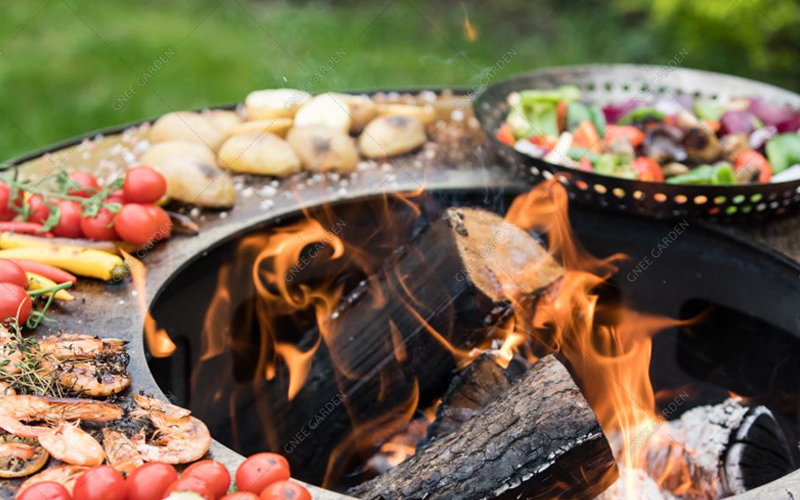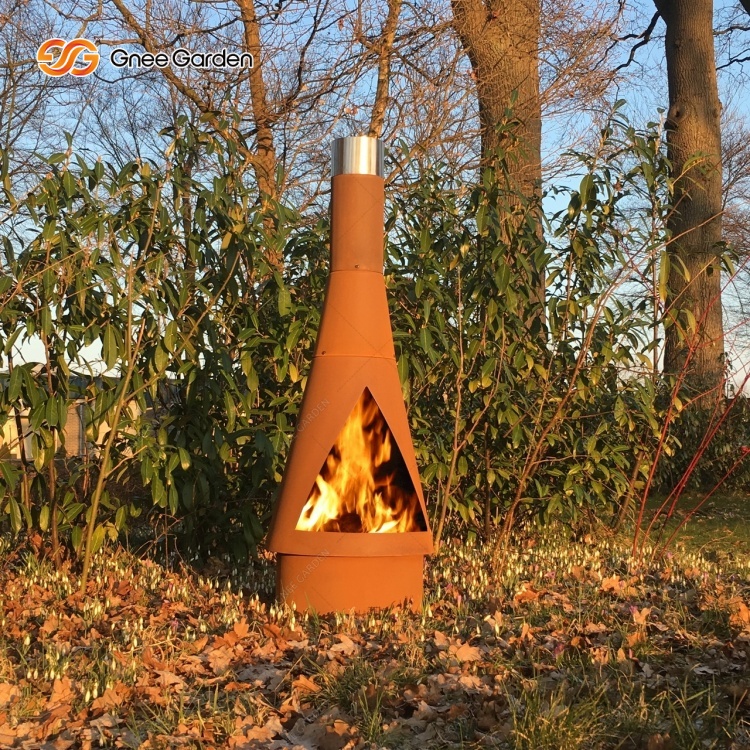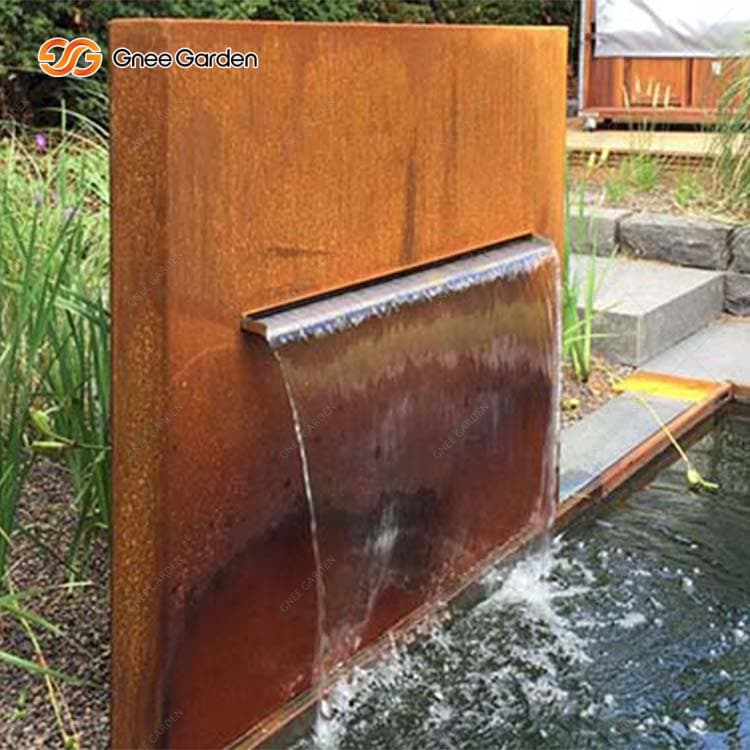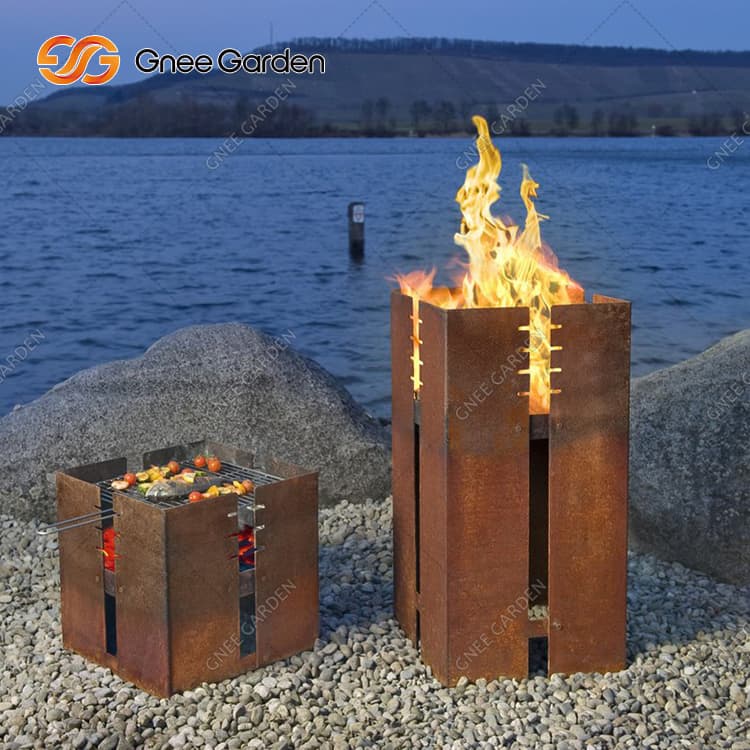Fire Pit Grill:How do you cook on a fire pit grill?
Ever contemplated the art of cooking on your fire pit? The allure of a fire pit grill in your backyard has gained immense popularity, and the reasons behind its trendiness are quite evident. Transforming your fire pit into a barbecue by incorporating a fire pit grill is not only straightforward but also the swiftest route to whipping up delectable dishes right in your garden.
The culinary possibilities on your fire pit are virtually limitless, and we’re here to guide you on converting your fire pit into a comprehensive outdoor kitchen. So, fire up your fire pit grill and join us as we walk you through the steps of cooking on your fire pit, turning your outdoor space into a versatile haven for culinary adventures.
Why Use Your Fire Pit To Cook?
There’s something wonderfully primal about cooking over an open flame. There’s a reason that barbeques are used the world over and most countries have their traditions around barbeques and open flame cooking.
The fantastic thing about having a fire pit is that it offers more options in the way you cook your food than a traditional barbeque.
And, once you’ve finished cooking you can throw on a couple more logs and continue sitting around the fire. enjoying good food and good company.

What Fuel to Use?
Choosing the right fuel for your fire pit when cooking is indeed a crucial consideration, and it can significantly impact the flavor and cooking characteristics of your food. Here are a couple of factors to keep in mind:
Charcoal: Charcoal is an excellent fuel source for cooking in a fire pit. lt generates an ideal amount of heat for cooking and maintains that heat effectively. However, it may not impart as much flavor to the food as some wood-fired options. Charcoal is a convenient and consistent choice for achieving controlled cooking temperatures.
Wood: Using wood for your fire pit lends a more traditional feel to outdoor cooking, reminiscent of cooking over a campfire. The distinct advantage of using wood is that the smoke it generates can slowly infuse flavor into your food. The type of wood you choose can add unique and pleasant aromas to your dishes. For example:
- Oak: Seasoned oak is excellent for cooking, burning slowly, and lasting for an extended period. It is well-suited for a slow burn, making it great for cooking.
- Apple: Applewood burns slowly, producing good heat and giving off a pleasant aroma. lt is particularly suitable for cooking poultry or fish, adding a delightful flavor.
- Experimentation: There are numerous other hardwood options available, and experimenting with different woods can add variety and depth to your cooking. However, it’s essential to source wood responsibly, considering sustainability and environmental impact.
Ultimately, the choice between charcoal and wood depends on your culinary preferences and the specific flavors you want to achieve. Whether you opt for the convenience of charcoal or the aromatic experience of cooking with wood, both options can contribute to a memorable and flavorful outdoor cooking adventure.

When it comes to cooking on a fire pit grill, there are two main techniques you can use: direct grilling and indirect grilling. Each method has its own unique benefits and allows you to achieve different cooking results.
Direct Grilling
Direct grilling involves placing food directly over the fire on the grill. To ensure even cooking and prevent sticking, the grill must be preheated before placing the food. Preheating is accomplished by allowing the fire to burn for a period of time until the grill is hot.
Once the grill is preheated, you can place the food directly over the fire. The heat from the fire will cook the food quickly, making it tender and juicy on the outside and inside. Adjusting the heat level is essential to achieve the desired cooking results. You can control the intensity of the fire by adjusting the distance between the food and the flame or by adding or removing coals.
Indirect Grilling
Indirect grilling is a technique that creates a hot zone on the grill. This allows for slower cooking and is ideal for large cuts of meat or dishes that require longer cooking times. To create a heat zone, you place the coals on one side of the grill and leave the other side without direct heat.
With indirect heat, you can cook food more gently and evenly, preventing it from burning or drying out. It’s important to watch your food closely and turn it as needed to ensure even cooking on both sides. This technique is perfect for cooking tender ribs or for smoking meats to infuse them with smoky flavor.
Whether you choose to grill directly or indirectly, cooking on a fire pit grill adds a unique flavor to your food. The crackling fire and smoky aroma fills the air, making you feel like you’ve stepped back in time to a simpler time. Experiment with different techniques and recipes to make the most of your outdoor cooking experience. Gather your loved ones around the fire pit and savor the delicious flavors that only a fire pit barbecue can provide. Let the flickering flames and warmth of the fire create a cozy atmosphere while you cook up a delicious meal. With an atmosphere of laughter and conversation, the fire pit grill becomes the center of your gathering. Enjoy the charm and nostalgia of cooking on a fire pit grill and create memories that will last a lifetime.

What fire pit grill maintenance and safety tips should I follow?
In terms of maintenance, it is important to remove ashes and debris, properly store and protect the grill from weather elements, and regularly inspect and maintain grill components. In terms of safety, it is important to properly extinguish fires, handle hot surfaces and utensils with care, and ensure a safe cooking environment.







